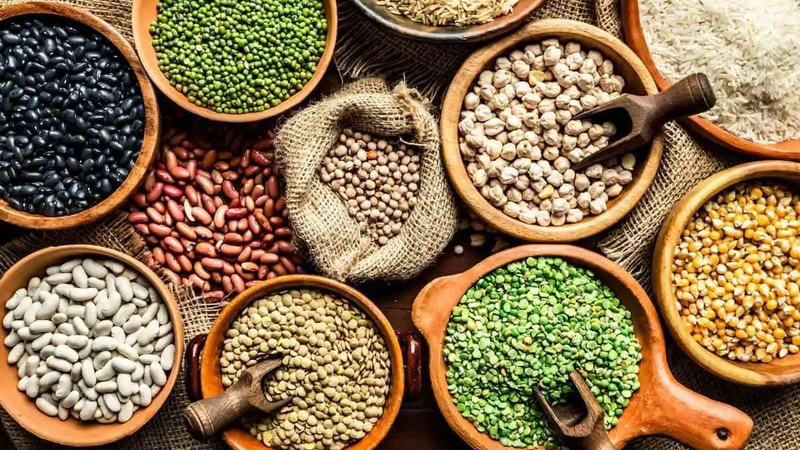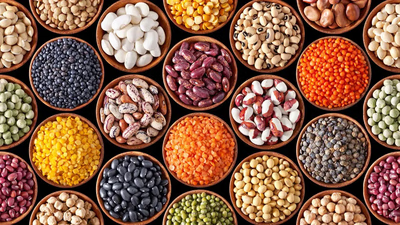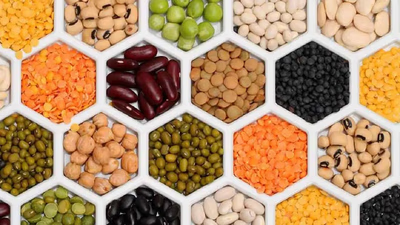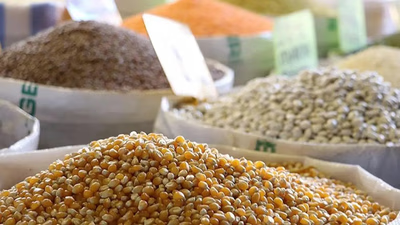
Cereals and legumes are vital for nutrition in Middle East diets.
Per capita consumption of grains and legumes in West Asia may vary depending on the country and other factors. It should be noted that these figures may change over time and vary depending on new conditions and various factors. Every country in the Middle East has its own culture and diet. Some countries may focus more on consumption of cereals such as wheat and barley, while others have a higher consumption of legumes such as lentils and chickpeas. This cultural and dietary diversity has a significant effect on the per capita consumption of grains and legumes.
The per capita consumption of grains and legumes may also vary in other West Asian countries depending on economic, cultural factors and the reduction in access to food sources. In this region, the consumption of cereals and legumes is an essential part of the general diet and is very important to meet the nutritional needs of the people. Below are some examples of the per capita consumption of some West Asian countries in 2021:
- Iran : The per capita consumption of grains and legumes in Iran in 2021 was approximately 145 kg per person per year. This amount includes consumption of wheat, barley, rice, lentils, peas and other legumes.
- Iraq : The per capita consumption of grains and legumes in Iraq was around 150 kg per person per year.
- Turkey : The per capita consumption of grains and legumes in Turkey in 2021 was about 180 kg per person per year.
- Syria : Due to the conditions of civil war and humanitarian crisis, accurate data for the per capita consumption of grains and legumes in Syria is not available. But before the crisis, the per capita consumption of grains and legumes in Syria was also high.
The economic conditions of each country can also affect the per capita consumption of grains and legumes. In some countries, the consumption of cereals and legumes is more affordable and the main source of food, while in other countries, the consumption of cereals and legumes may decrease due to unfavorable economic conditions. The food supply power of each country can also be influential. Some countries can have a high consumption of these products due to the strong domestic production of grains and legumes. On the other hand, countries that depend heavily on imports of grains and legumes may have lower per capita consumption due to limited resources and poor economics.
The amount of local production of grains and legumes in each country can also be influential. Countries with high domestic production capacity in the field of grains and legumes can consume more of these products, while import-dependent countries may have limited supply of these products and have lower per capita consumption. Therefore, factors such as cultural diversity, economic conditions, food supply and the amount of local production can cause the per capita consumption of grains and legumes to vary in the Middle East. These changes stem from cultural, economic, and local production differences in each country. Each country in the Middle East has a specific organization to meet its food needs, and because of this, the per capita consumption of grains and legumes varies in each country.
In addition, other factors can play an important role in changing per capita consumption, such as demographic changes, the growth rate of settlements, changes in food patterns, changes in the industrialization and commercialization process of countries, as well as the effects of crises and wars in the region. Therefore, per capita consumption of grains and legumes in the Middle East varies and is influenced by cultural, economic, supply and political factors. Each country has its own characteristics and conditions that make the consumption of these products variable in this region.
-

Turkey, Iran, and Iraq are key players in the production of grains and legumes in West Asia, with Turkey leading in wheat, chickpeas, and lentils. Iran excels in rice cultivation, particularly Basmati, while Egypt is significant for fava bean exports. However, agricultural production faces challenges such as water scarcity, soil salinity, and political instability. The ongoing conflicts in Syria have severely impacted wheat production. Bread remains a staple in the Middle Eastern diet, with various wheat-based types consumed daily. Rice is also important but less prevalent than bread. Chickpeas and lentils are integral to many meals and are especially valued for their protein content. Sustainable practices and improved water management are essential for enhancing food security in the region.
Countries like Saudi Arabia and the UAE heavily rely on imports due to limited arable land and unfavorable weather conditions. The agricultural landscape is further complicated by economic factors that influence dietary patterns towards processed foods. Promoting local production and diversifying crops can help build a more resilient food system across West Asia.
-

West Asian farmers cultivate a diverse range of grains and legumes, adapting to the region"s arid climate. Key grains include wheat, barley, and rice, with wheat being the most significant crop grown in Turkey, Iran, Syria, and Iraq. Barley serves both as animal feed and human food in traditional dishes. Rice production is notable in Iran and Iraq, featuring varieties like Basmati. Legumes such as chickpeas, lentils, fava beans, and various beans are also widely grown. Farmers employ advanced irrigation techniques like drip irrigation to optimize water use due to water scarcity challenges. Crop rotation practices enhance soil fertility while addressing pest management issues. The cultivation of drought-resistant varieties is increasingly important as climate change impacts agricultural conditions. Overall, these practices contribute to the resilience of West Asia"s agricultural sector and ensure food security for the region.
-

Grains and legumes are vital to West Asian diets, providing essential nutrition and cultural significance. Wheat is the primary grain, used in staple breads like pita and lavash, while bulgur features in dishes such as tabbouleh. Legumes, including chickpeas and lentils, serve as affordable protein sources and are integral to traditional meals across the region. Dishes like Qorme Sabzi, lentil rice, and Mujaddara highlight the versatility of these ingredients. The economic accessibility of grains and legumes makes them crucial for food security in Middle Eastern countries. They not only fulfill dietary needs but also reflect the rich culinary heritage of West Asia, showcasing a variety of flavors and cooking methods that have been passed down through generations.
-

Per capita consumption of grains and legumes in West Asia varies significantly across countries due to cultural, economic, and local production factors. In 2021, Turkey had the highest consumption at approximately 180 kg per person annually, followed by Iraq at around 150 kg and Iran at about 145 kg. Syria"s data is less reliable due to ongoing humanitarian crises. Economic conditions play a crucial role; countries with strong domestic production can maintain higher consumption levels, while those reliant on imports may face limitations. Cultural diversity also influences dietary preferences, with some nations favoring cereals like wheat and barley, while others prioritize legumes such as lentils and chickpeas. Additionally, demographic changes and the impact of regional conflicts further affect consumption patterns. Understanding these dynamics is essential for stakeholders in the Middle East trade platform to navigate the B2B marketplace effectively. "




